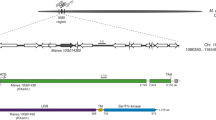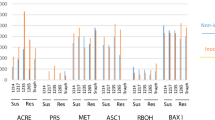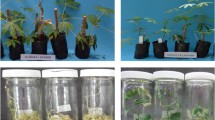Manihot esculenta
). PAL enzyme activity and MEPAL mRNA levels were measured in leaves of cultivar MCOL 22 following mechanical wounding or inoculation with 2 bacterial pathogens. MCOL 22 is resistant to Xanthomonas cassavae, which causes cassava bacterial necrosis and susceptible to X. axonopodis pv. manihotis, which causes cassava bacterial blight. PAL enzyme activity in the resistant interaction was significantly higher than in the susceptible interaction or the control. Similarly, MEPAL transcripts were detected in leaves during the resistant interaction, but not during the susceptible reaction. RFLP analysis with MEPAL revealed a divergence between South American and African/Asian cultivars and showed promise for MEPAL as a marker for resistance to Xanthomonads.
Similar content being viewed by others
Author information
Authors and Affiliations
Additional information
Received 25 September 1998/ Accepted in revised form 4 January 1999
Rights and permissions
About this article
Cite this article
Pereira, L., Goodwin, P. & Erickson, L. The Role of a Phenylalanine Ammonia Lyase Gene during Cassava Bacterial Blight and Cassava Bacterial Necrosis. J Plant Res 112, 51–60 (1999). https://doi.org/10.1007/PL00013858
Issue Date:
DOI: https://doi.org/10.1007/PL00013858




